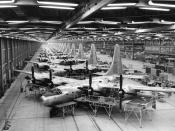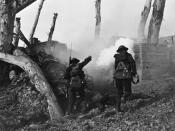The end of World War I saw the United States retreat into isolation. The Senate refused to ratify the Versailles Peace Treaty that ended World War I. The U.S. failed to join the League of Nations--the international organization that was the less-successful interwar predecessor of the United Nations. The U.S. raised tariffs early in the 1920s (although not to levels that appreciably discouraged imports). Most important, perhaps, the 1920s saw the end of free immigration into the United States. Migration from Asia had been restricted for several generations. Migration from Africa had never been an issue. But up until the mid-1920s migration from Europe had been unrestricted.
More than 1.2 million immigrants had come to the U.S. in 1914. But, once the immigration restrictions of the 1920s took effect, the overall total was fixed at only 160,000 or so immigrants a year. Moreover, different nations had different quotas. The quotas for immigrants from northern and western Europe were more than ample for the demand.
The quotas for immigrants from southern and eastern Europe were very small.
The United States tried to pretend that the rest of the world did not really exist. Its people turned inward, and they found that they had plenty to do. For in the 1920s the United States became a modern middle-class economy of radios, consumer appliances, automobiles and suburbs. Nearly thirty million motor vehicles were on the road in 1929, one for every five residents of the country. Mass production had made the post-World War IUnited States the richest society the world had ever seen.
Mass Production Began with the "American system of manufactures." In the middle of the nineteenth century English engineers viewing production on the Western side of the Atlantic Ocean noticed some regularities in the way Americans seemed to do things. Their...


